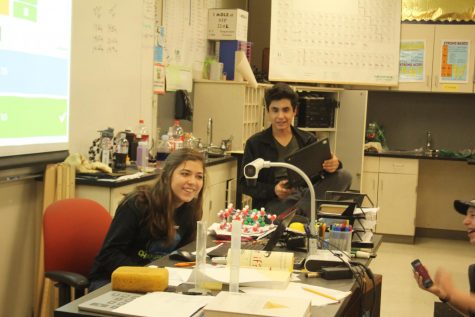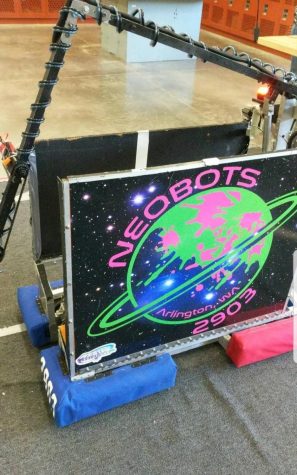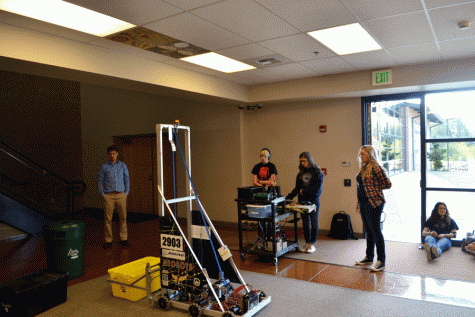Robotics Upcoming Competition
Last year, Robotics earned their way to the World Competition in a wild card slot; the time has come again for competition season.
Robotics has two upcoming competitions. The Girls Generation Competition will be on Saturday, October 28, in the Kent area. This is a competition where the drive team, the ones controlling the robot, has to be composed completely of girls. Then they will have their first FTC Competition on November 4 at Weston High School, in which they will battle with robots that fit into an 18 inch cube.
In the FIRST Tech Challenge (FTC) Competition, a 12 foot square field is set up with a balancing square in each corner (two red and two blue), four jewel sets (point making piece), four crypto boxes lined along the sides, 48 glifs (foam cubes) in the middle, three pictographs, and four relics (point making piece). The game begins with each robot balancing on the square with a preloaded glif. Then the autonomous period begins; for 30 seconds the robot has to function on its pre-programmed software. They can earn points by putting glifs into the crypto box, by decoding a pictograph and putting a glif into the corresponding crypto box, or by parking in a safe zone in front of any crypto box. In the two minute drive time, they can score points by putting the glifs into the crypto boxes as columns, rows, or in a predetermined pattern. The last 30 seconds is called the end game. During this time, teams can reach over the boundary to place relics on the relic recovery zone. Whichever team scores the most points, wins.
Charly Waddell (‘18), project manager explained that they use FTC to train their new members and to prepare them for the FIRST Robotics Competition (FRC) Competition (large robots) that begins in January.
After going to the FRC World Competition last year, Waddell hopes to “get a robot that can perform on a level similar to last year.”
“I think we have a good group of kids and dedicated new people,” Allison Stansberry (‘18), Vice President and Lead Programmer, said
Most dedicated club members put in 530 hours a year, as during the six week build season, starting in January, the club meets after school nearly every day.
“It’s a lot like running a business,” Stansberry said, “We know how to work in a team and the basics of business and engineering.”
A lot more goes into Robotics than building a robot. They do their own financing, fundraising, paperwork, branding, and hosting. It takes a lot of work to be part of the club, but the members know its worth it.
With build season approaching, the team is hoping to gain experience through the FTC competitions, and are confident for the upcoming year








